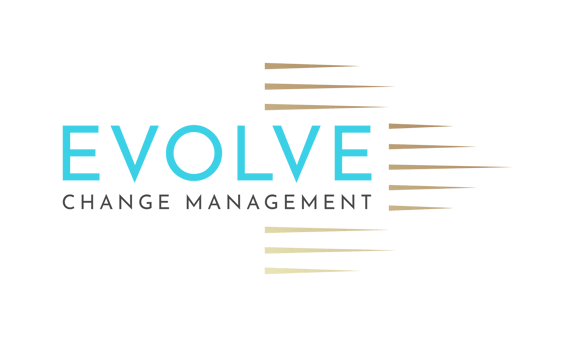Identifying business irritants: A guide for organisations of any size
EVOLVE YOUR BUSINESS (ARTICLE)
3 min read


Most of us have learned over the years that, sometimes, even the smallest issues can escalate into significant challenges if left unaddressed. These minor disruptions, often overlooked, can gradually undermine your operations, affect employee morale, and ultimately impact your bottom line. Whether you’re running a start-up or managing a well-established corporation, identifying and resolving these business irritants is essential to maintaining a productive and efficient work environment.
What Are Business Irritants?
Business irritants are persistent issues that cause friction within your organisation. These could be anything from inefficient workflows and outdated technology to communication breakdowns and unclear roles. While they may seem minor individually, collectively, they can create significant obstacles to your organisation’s success.
Why Identifying Irritants Matters
Overlooking these irritants is like ignoring a small leak in a dam—it may seem insignificant at first, but over time, it can lead to a major breach. If left unchecked, these issues can lead to decreased employee engagement, reduced productivity, and a decline in customer satisfaction. However, by proactively identifying and addressing these irritants, you can streamline operations, enhance efficiency, and foster a more positive workplace culture.
And if the process of identifying and resolving these issues seems daunting, this is where the expertise of a change management consultant can be invaluable. With the right support, you can tackle these challenges head-on and turn potential problems into opportunities for improvement.
Steps to Identify Business Irritants
1. Listen to Your Employees
Your employees are at the forefront of your operations and often have the best insights into what’s not working. Regularly gather feedback through surveys, idea channels, or open forums. Pay attention to recurring themes or complaints, as these often indicate underlying irritants that need to be addressed.
A change management consultant can facilitate these consultation sessions, ensuring that valuable insights are captured and acted upon.
2. Analyse Workflow Efficiency
Take a close look at your processes. Are there bottlenecks that slow things down? Are tasks being duplicated? Process mapping can help you visualise and identify areas where inefficiencies occur. Often, even small adjustments can lead to significant improvements.
Investing in process improvement projects can help you redesign workflows to eliminate inefficiencies and align them with your broader strategic goals.
3. Review Technology and Tools
Outdated or misaligned technology can be a major source of frustration. Ensure that your tools are up-to-date, fit for purpose, and properly integrated with other systems. Investing in the right technology can eliminate unnecessary disruptions and boost productivity.
Software developers often have specialised representatives that provide advice on technology upgrades and implementation solutions, helping you choose solutions that best meet your organisation’s needs.
4. Evaluate Communication Channels
Effective communication is critical to avoiding misunderstandings and ensuring smooth operations. Assess how information flows within your organisation. Are there too many communication channels, or not enough? Is important information getting lost in the layers or shuffle? Streamlining communication can reduce confusion and improve overall coordination.
A change management consultant can offer strategies to optimise communication, ensuring that everyone stays informed and aligned.
5. Clarify Roles and Responsibilities
Unclear roles can lead to confusion and inefficiency. Ensure that every employee knows their responsibilities and how their work contributes to the organisation’s goals. Clear job descriptions and regular check-ins can help maintain clarity and accountability.
A change management consultant can work with your project manager and leadership team to ensure that roles are clearly defined, reducing overlap and enhancing productivity.
6. Monitor Customer Feedback
Your customers’ feedback is a valuable source of information about potential irritants within your organisation. Pay close attention to patterns in customer complaints or suggestions. These can provide insights into underlying issues that need to be addressed.
Change management consultants can help you analyse customer feedback and identify areas for improvement, ensuring that your organisation continues to meet customer expectations.
Taking Action: Resolving Business Irritants
Once you’ve identified the irritants, the next step is to address them. This might involve:
Process Improvement: Redesigning workflows to eliminate bottlenecks and redundancies.
Technology Upgrades: Implementing new tools or software that better align with your business needs.
Training and Development: Providing additional training to ensure employees are well-equipped to perform their roles efficiently.
Communication Strategies: Establishing clearer, more effective communication channels within your organisation.
Regular Reviews: Continuously monitoring and revisiting these areas to prevent new irritants from arising.
Engaging a change management consultant can provide the expertise and fresh perspective needed to tackle these challenges effectively, ensuring that your organisation remains agile and responsive to change.
Conclusion
Business irritants, if left unchecked, can have a significant impact on your organisation’s efficiency and morale. By taking the time to identify and resolve these issues, you can create a smoother, more productive work environment that benefits everyone involved.
Whether you’re a small business or a large corporation, addressing these irritants is key to sustained growth and success. And if you need expert guidance along the way, a change management consultant can provide the support you need to navigate these challenges and achieve your organisational goals.
